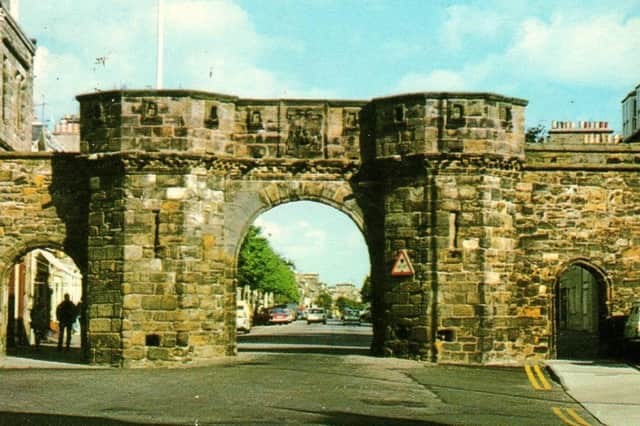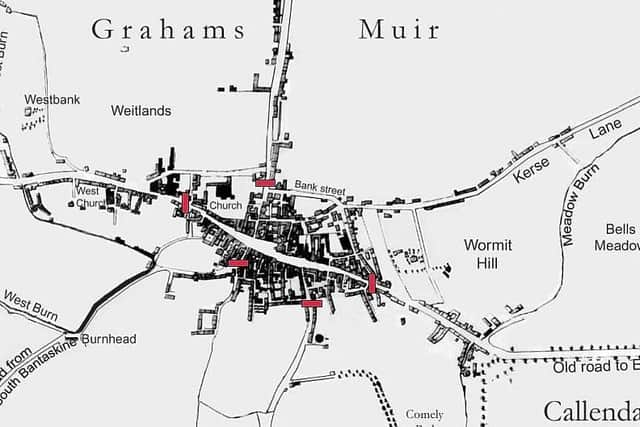Ian Scott: Falkirk’s 'other' wall played important role


But there was another wall not often mentioned which played an important part in Falkirk’s mediaeval development.
It was certainly not of Antonine proportions or as big as the town walls of Stirling or Edinburgh – probably much more like a dyke surrounding the core of the town which then consisted of the High Street, a network of closes and wynds and the garden grounds stretching north and south behind the properties.
Advertisement
Hide AdAdvertisement
Hide AdWe know from surviving records that the lands on each side of the “the Kingis Streite” were being feued in the 16th century though who exactly was doing the feuing and subsequent building is not clear.


In the early 1800s a local writer called Robert Kier described stone buildings with the date 1513 being demolished.
He also identified the five ‘ports’ or gates of the town which were placed at various points in the wall.
One of these, the East Port not far from where the York Café stands was still there in the late 1700s though in a poor condition.
Advertisement
Hide AdAdvertisement
Hide AdKier says that “the ports were built in 1585; they were arched gateways of stone, battlemented on top, with arrow and hagbut loopholes in the side walls... there was a circular vizzying hole through which the armed porter might reconnoitre those who demanded entrance.”
They probably resembled the surviving West Port of St Andrews from the same period.
We know the location of the other gates: the West Port stood on the High Street near the Lint Riggs, the North Port on Vicar Street near Bank Street, the South Port on the Cow Wynd probably near Bean Row and Westquarter (or Bantaskine) Port close to the top of the Howgate now beneath the shopping centre.
It was called Westquarter Port because of its proximity to the Great Ludging, the town house of the Livingstons of Westquarter where Waterstones is today.
Advertisement
Hide AdAdvertisement
Hide AdThe wall itself was probably constructed around the beginning of the 1700s and the “indwellers” were responsible to the Livingston’s Regality Court for building and maintaining both the wall and the ports.
Whether they were a deterrent to people planning bad things for the town or a way of stopping wandering animals is not clear.
We do know that when the plague came to central Scotland via Bo’ness in the middle of the 17th century, the gates were shut to anybody from the east which unfortunately failed to keep the pestilence out of the town.
The wall was certainly a method of marking the boundary of the burgh and even today we can see that the historic centre is still in outline much the same.
Advertisement
Hide AdAdvertisement
Hide AdIt is difficult to be exactly sure of the line of the barrier but it probably followed today’s Bank Street and Newmarket Street to the north and Bean Row and the Pleasance to the south.
Attempts to locate the foundations of either wall or ports have not been successful but we live in hope that one day we will stumble on anything that still survives.
Comment Guidelines
National World encourages reader discussion on our stories. User feedback, insights and back-and-forth exchanges add a rich layer of context to reporting. Please review our Community Guidelines before commenting.
